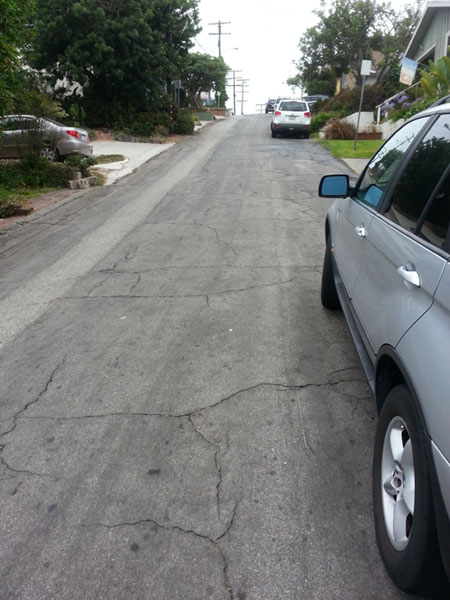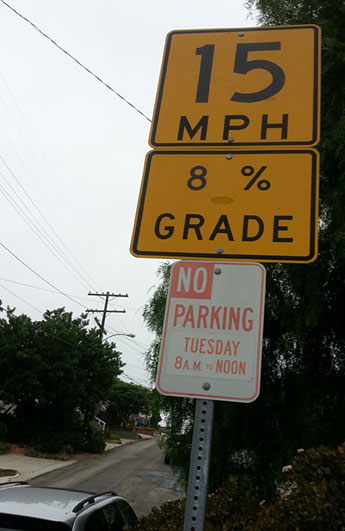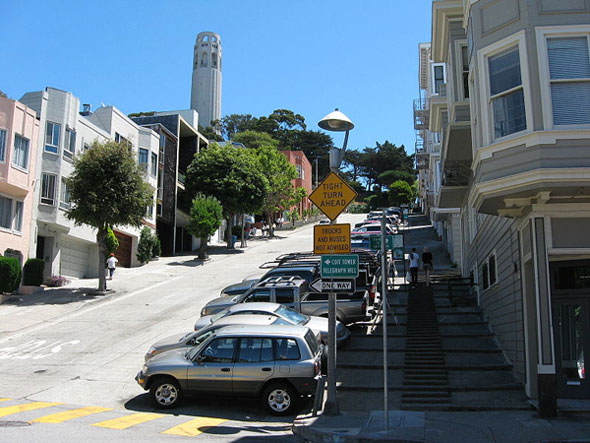Measuring Up
by Andrew Boyd
Today, measuring "up." The University of Houston's College of Engineering presents this series about the machines that make our civilization run, and the people whose ingenuity created them.
We've all experienced it, though certainly not in Houston. Walking up a particularly steep street, winded with legs aching, we look back down to assess just how steep our climb was. Was the incline thirty degrees? Forty? Maybe even forty-five?

We rarely have a guide when walking, but when driving we sometimes get help from signs on the side of the road. Ever notice those yellow signs as you approach an especially steep stretch of Interstate highway? Caution, they warn, "six percent grade." Six percent? That's not very steep, is it?

Well, let's begin by taking a look at what a six percent grade really is. It's not six degrees. If road grades were measured in degrees, life would be simpler. A zero degree incline would indicate flat and ninety degrees would mean straight up. When we see a road grade given as a percentage, however, it corresponds to how far we go up versus how far we go horizontally. So, for example, if we go six feet up for every hundred feet we travel horizontally, the grade of the road is six divided by one-hundred, or six percent.
It turns out that the number of degrees is always smaller than the grade. Percent grade actually overstates our natural inclination to think of steepness in terms of degrees. That six percent grade on the Interstate? It's an incline of only three and a half degrees. Six percent, by the way, is the maximum allowable grade on an Interstate highway.
So what about that steep hill we climbed? Surely it was greater than three and a half degrees. Yes, but not by as much as we might think. The steepest streets in notoriously hilly San Francisco top out around seventeen degrees. And if you've ever walked them, you may have felt a need to climb on your hands and knees. That's not an exaggeration.

To further make the point, consider replacing a set of household stairs with a ramp running up at the same angle. The Council of American Building Officials recommends stairs that have a maximum incline of no more than thirty-eight degrees, and most home staircases run considerably less than that. Imagine trying to walk up this staircase-turned-ramp without holding onto a banister. Even with a very rough surface and special climbing shoes, the task is for all practical concerns impossible.
So those thirty or forty degree hills we've conquered? They exist only in our imagination. Time and again studies have shown that we perceive hills as much steeper than they really are. We don't have trouble with angles on paper, but when it comes to judging steepness in the world around us, all bets are off. Why do we fail so badly? That's not altogether clear. It seems it's just the way our minds work; one flaw amidst many in that nonetheless remarkable creature we call human.
I'm Andy Boyd at the University of Houston, where we're interested in the way inventive minds work.
(Theme music)
Thanks to Connor Browne for a discussion that led to this episode.
Filbert Street (San Francisco). From the Wikipedia website. Accessed July 15, 2013.
Stairs. From the Sizes website. Accessed July 15, 2013.
The picture of Filbert Street in San Francisco is from Wikimedia Commons. The remaining pictures are by E. A. Boyd.
This episode first aired on July 18, 2013.